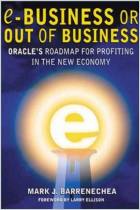Melden Sie sich bei getAbstract an, um die Zusammenfassung zu erhalten.

Melden Sie sich bei getAbstract an, um die Zusammenfassung zu erhalten.
Peter Cohan
e-Profit
High Payoff Strategies for Capturing the E-Commerce Edge
AMACOM, 2000
Was ist drin?
From winning the war for tech talent to choosing the right apps, this e-guide has it all.
Recommendation
David Cohan’s book is too useful to read in linear progression. Each chapter is a self-contained unit composed of an e-commerce problem, a case study analyzing how one company attempted to solve the problem, and a series of principles for effective problem solving. The book presents all aspects of e-commerce in useful detail, from motivating the reluctant CEO to managing the implementation of an e-commerce project. This book is for senior executives and change leaders, but it is useful to anyone who wants to learn more about the process of designing, developing, and implementing an e-commerce project. Project managers and consultants also will find the book useful because it presents the e-commerce buyer’s perspective in straightforward detail. getabstract recommends this book to senior executives, change agents, business managers and students.
Summary
About the Author
Peter S. Cohan is president of Peter S. Cohan & Associates, a management-consulting firm specializing in new business opportunities. He is also the author of Net Profit: How to Invest and Compete in the Real World of Internet Business and The Technology Leaders. He is a commentator for CNBC’s Today’s Business and Squawk Box and has appeared on CNNfn’s Before Hours and ZDTV’s The Money Machine.






















Comment on this summary